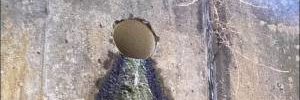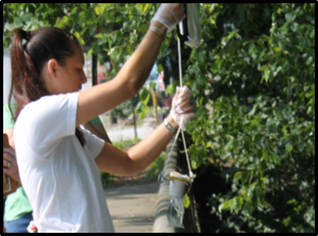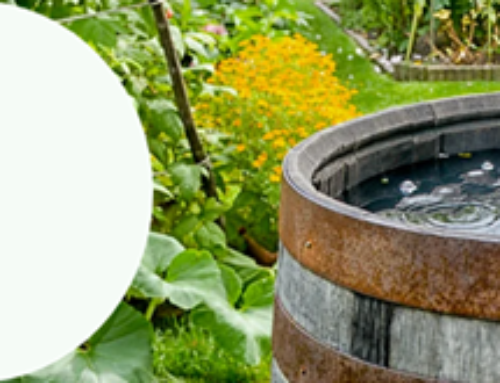I am sitting in a coffee shop when a friend walks in and sits down to work in the chair next to me. I tell him that I’m writing an article about sewage pipes. He immediately chimes in and says, “Huh. My uncle is a wastewater engineer who inspects construction sites and he was telling me how often he finds sewage pipes that contractors have connected to a stormwater pipe instead of to the sanitary sewer system.” No, this is not the start of a bad joke…it’s just pure coincidence and a perfect way to introduce the lovely topic of sewage inadvertently getting into our waterways.
We have sent a rover to Mars, we have eradicated small pox, and we have made seawater drinkable. Yet, raw sewage still gets into our nation’s waterways every day. Perhaps more than we realize. This source of nutrients, pathogens, and other contaminants comes from a slew of circumstances, which is part of the reason the sewage problem is a behemoth to fix. Sources include cross-connections into storm drains (as my friend mentioned), obstructions and overflow of sanitary sewer pipes, failing septic systems, and leaking and broken sewer pipes. And, did you know that sewage pipes are constructed with an assumed amount of leakage – up to 125 gallons of leaking sewage per 400 feet of pipe per day (ASTM, 2009)? Our pipe networks are not as neat and tidy as many of us probably imagine.
It is actually very difficult to quantify how much wastewater gets into our waterways. Over the past two years, EPA convened an expert panel to estimate the load of nutrients that could be kept out of the Chesapeake Bay if communities eliminate individual sources of sewage and other illicit discharges. Their charge was difficult because, for example, available research from across the globe reports sewer exfiltration rates that span three orders of magnitude. Despite the challenging nature of quantifying sewage leaks in urban areas, the expert panel was able to develop a framework for urban communities in the Bay watershed to now get credit for tackling illicit nutrient discharges in earnest (Schueler et al., 2014).
But local stormwater and wastewater departments only have so many people available, if any, to survey the miles of streams and beach front that may inadvertently be receiving raw sewage. To find these illicit discharges, we need all hands on the poop deck (sorry, had to do it). We need watershed organizations, citizen volunteers, graduate students, and others who are willing to get out on the water and test it for bacteria, ammonia, detergents, or other sewage indicators. We need more eyes on the water, week by week, and month by month.
Luckily there are groups out there who have already recognized the power of citizen scientists in this crusade. The Chattahoochee Riverkeeper, for example, initiated its volunteer-based Neighborhood Water Watch program in 2010. Through the work of staff and approximately 50 volunteers, the program collects more than 1,600 E. coli bacteria samples a year. As a result of their consistent monitoring, the volunteers discovered a section of Proctor Creek in Atlanta with chronically high levels of bacteria. They alerted City of Atlanta personnel, who followed up by conducting an extensive camera survey (over 20 miles of stormwater pipe) in proximity to the problem area to look for sources of sewage into the stormwater pipes. What they found was at least 13 sewer pipes that were accidentally connected to the stormwater system and had been discharging raw sewage to the stream, likely since the mid-2000s. Eleven of the illicit connections have already been fixed by the City.
This and other success stories are described in CWP’s new Safe Waters, Healthy Waters guide (in draft). This manual speaks to citizen groups and watershed organizations looking to test bacteria in surface waters as a way to identify unsafe recreational areas and detect illicit discharges. The manual, which will be released in 2015*, focuses on simple, reliable, and low-cost techniques that can be used by volunteers across the country.
There are success stories like the one in Atlanta that are no doubt waiting to be told in many other cities with old sewer infrastructure or historic combined sewer systems. Now it’s a matter of getting more waders on the ground, because as we all know…sewage happens.
*If you would like to review and provide comments on the draft version of the Safe Waters, Healthy Waters guide, please contact Laurel Williamson at lw@cwp.org.
References
American Society for Testing and Materials (ASTM). 2009. Standard practice for infiltration and exfiltration testing of installed precast concrete sewer pipe lines. ASTM C-969-02.
Schueler, T., Lane, C. and Stack, B., 2014. Recommendations of the Expert Panel to Define Removal Rates for the Elimination of Discovered Nutrient Discharges from Grey Infrastructure. Final Approved Report. EPA Chesapeake Bay Program. Available online at: http://chesapeakestormwater.net/bay-stormwater/baywide-stormwater-policy/urban-stormwater-workgroup/illicit-discharge-detection/
 Laurel Williamson is a Stormwater and Watershed Planner at the Center for Watershed Protection. She is located out of the Charlottesville, VA satellite office where she works on watershed field assessments, stormwater management trainings, and technical assistance to local and state governments. In the past, she has worked for the County of Albemarle, VA on stormwater BMP maintenance inspections and at the Alliance for the Chesapeake Bay, coordinating the citizen water quality monitoring program. Laurel has a B.A. in Environmental Science and a B.A. in Environmental Thought & Practice from the University of Virginia.
Laurel Williamson is a Stormwater and Watershed Planner at the Center for Watershed Protection. She is located out of the Charlottesville, VA satellite office where she works on watershed field assessments, stormwater management trainings, and technical assistance to local and state governments. In the past, she has worked for the County of Albemarle, VA on stormwater BMP maintenance inspections and at the Alliance for the Chesapeake Bay, coordinating the citizen water quality monitoring program. Laurel has a B.A. in Environmental Science and a B.A. in Environmental Thought & Practice from the University of Virginia.







